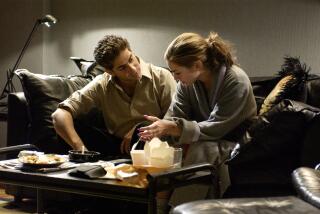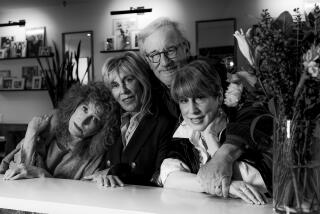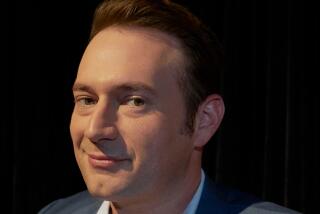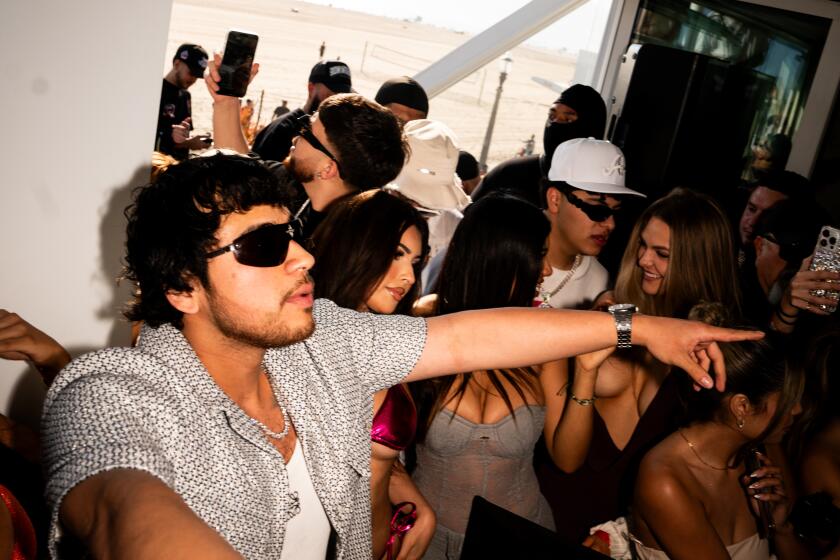As an artist, Ava DuVernay raises cry against racism with the documentary ‘13th’
With its focus on mass incarceration and the criminalization of African American men, Ava DuVernay’s “13th” seems tailor-made for the era of Black Lives Matter. But a key part of the movie’s thesis is that there’s never been a moment when its critique of systemic racism wouldn’t have been timely: The 13th Amendment may have outlawed slavery, but the “loophole” allowing those convicted of crimes to be forced into involuntary servitude allowed the system to be rebuilt under another name. It’s a film of big, bold ideas, articulated by a slew of subjects including activist Angela Davis and scholar Henry Louis Gates, spanning centuries of American history and cutting through the fog of political rationalizations.
So naturally, with such a weighty film under her belt, DuVernay’s next step would be to take on another societal ill, right? Well, no. She’s currently in production on Disney’s “A Wrinkle in Time,” a far less politically charged project that has made her the first black woman to direct a movie with a budget of more than $100 million.
DuVernay took a moment away from that production to talk with The Envelope about “13th.”
When you introduced “13th” at its world premiere at the New York Film Festival, you said you didn’t want to make a movie about black trauma, but about black survival. How did you find that balance?
That was a big challenge for me as a black woman filmmaker, wanting to tell the story of what I knew, what I’ve studied, what I’ve always been around — and also knowing what black family is and what black humanity is and what black joy is and not wanting to disrespect that either. We need that 100 minutes to take you through the greatest hits of racism, basically, but not leave you there, to be able to say this is important and we’re not letting you off the hook and we need to all look at it — but also please know that side by side with the struggle has been a survival that’s beautiful and should be acknowledged.
Even though there’s a lot of talking-head footage, you manage to give the movie a distinctive visual style. Most documentaries don’t lay dolly track for an interview.
It’s such a pleasure to answer this question. Nobody’s asked me about the craft. I used two black cinematographers. That’s rare. One of them is a black woman. That’s even more rare, like a pixie or a unicorn or something. The idea was that all of the backdrops would denote industrial labor, like brick and steel and glass and rock. For Angela Davis, we basically broke into this old abandoned train station in Oakland. I thought that I’d get out and do some vérité stuff at some point, because I didn’t trust that the talking heads alone would be interesting enough, but I just got lucky. These people are incredibly charismatic and they’re super smart. It’s like a classroom of very, very wise people around the subject just looking straight in your face and telling you what they know, and for me that was enough.
You also use a lot of archival footage, especially in the sequence that combines the recent viral videos of black men and women who have been killed by the police. Those images are immensely powerful and immensely disturbing, and they need to be handled carefully. How did you approach the process of including them in the film?
You don’t need to ask [the victims’ families] for permission. The person who is taking the video, the eyewitness, it’s owned by them or the news organization that they sold it to. You don’t have to consult the families about the last minute of their loved one’s life, the last breath they took. I just thought that that wasn’t the right thing. We called and asked for an emotional permission. About seven families said, “No one asks us, but if you’re asking, no.” I completely understand that. The families that did say yes, they’re there to force us to bear witness. We can talk about it. But when you see it, it’s human beings that care about each other. It affects you in a different way.
You could have just noted that fact in the credits, but instead every video is labeled individually with the person’s name and the fact that you obtained permission from their family. It’s a reminder that even if viewers might be tempted to rationalize some of those deaths, every one left a devastated family behind.
This is a loss to someone. That’s what that was constructed to do. We needed the families to say yes in order to do it. The humanity is not in the image. You just see the cold-blooded [killings]. By putting those words on, you humanize it. This person had a family. This person had a name.
At the other end of the spectrum are the clips from D.W. Griffith’s virulently racist “The Birth of a Nation,” which has become so toxic that it’s almost impossible to screen in public. Why did you feel the need to use those?
I want to look at it because it is the foundation of the very medium that I work within. I look at some of those shots and I think, “Where was the camera, was it on a cart? How was that shot so smoothly?” Really deconstructing the close-up, editorial innovations, innovations with camera. But in order to look at it, I have to look at racism on my screen, and that affects me. I have to look at a characterization of myself that is a complete fabrication and a myth that affected my people. To me that mirrors the story where we talk about media images and how much we over-index images of black criminality. Black people do not commit more crimes than white people. They commit different crimes. The crimes that black people commit, those are the crimes that have the harshest sentences.
In the current election cycle, there’s been an alarming resurgence in open white supremacy, not just the dog-whistle racism that can rear its head in American politics. Did speaking to this historical moment affect how you put the film together?
It affected the timing of the film. Definitely around April when it started to solidify who the candidates were going to be, I said, “This needs to be out there.” More than addressing Mr. Trump and Mrs. Clinton and especially their candidacy within the film, both of them had engaged in public discourse as public figures around issues of black criminality and non-black fear of blacks as criminals, before either of them were the candidates. They were part of the story outside of this election.
We’re still at a place where in some quarters it’s treated as more offensive to call someone a racist than for that person to be racist. How do we get past that?
Well, you don’t get past it. That’s why we’re stuck. I just think it’s fascinating that an era of Black Lives Matter is also an era of someone like Trump. We’re here and we’re trying to do something about it through our little corner of it, which is cinema. I feel like artists are stepping up to this moment through what we know how to do, raising our voices. We’ve always done this, but right now there’s a chorus that’s forming, and it’s beautiful.
See the most read stories this hour »
ALSO:
Director Ava DuVernay tells Democrats her documentary, ‘13th,’ is ‘not propaganda’
Ava DuVernay tackles mass incarceration in ‘13th’
Ava DuVernay’s documentary ‘13th’ simmers with anger and burns with eloquence
More to Read
From the Oscars to the Emmys.
Get the Envelope newsletter for exclusive awards season coverage, behind-the-scenes stories from the Envelope podcast and columnist Glenn Whipp’s must-read analysis.
You may occasionally receive promotional content from the Los Angeles Times.







